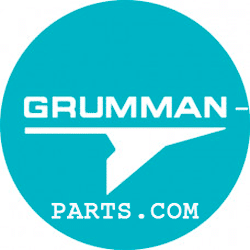FAA Advisory NOTC4328: Worn Fuel Primer Pumps — What Every Grumman Owner Needs to Know
On March 19, 2025, the FAA issued Advisory NOTC4328 warning pilots and aircraft owners about worn fuel primer pumps, particularly in vintage general aviation aircraft. These pumps, crucial for starting engines under a range of environmental conditions, can become a hidden hazard when degraded by time, wear, or improper maintenance.
In light of this advisory, we reviewed a recent surge of discussions in the Grumman owner community to distill real-world issues, technical insights, and proven solutions to keep your aircraft safe and airworthy.
FAA Advisory Summary
• Worn primer pumps can result in internal fuel leaks, causing fuel odor in the cockpit or visible drips.
• Degraded check valves may cause fuel to siphon into the intake manifold, leading to hard starts, engine roughness, or unexpected richness at idle.
• In extreme cases, a malfunctioning primer may cause engine fires during start attempts.
• The FAA advises inspection of the retention pin and endcap with service or replacement based on condition.
Community Reports: Real Grumman Owner Experiences
🔒 Locking Problems
“In a 1979 Tiger I used to own, I’ve had the primer come out… because I didn’t properly lock it…” – John Petruska
“I noticed the primer had become unlatched and had worked its way out on climbout.” – Neil Johnson
💧 Leaks and Fuel Loss
“Fuel was leaking from the tee… no matter how much I primed, it wouldn’t start… once fixed, no more problems.” – Larry Tatsch
🧪 Internal Degradation
“Removing the check valve springs and balls left a pile of fine brown powder…” – David Fletcher
🌡️ Hot vs Cold Starts
“At 6800 ft MSL, I need six strokes below 0F to get a reliable start.” – John Klapp
“Electronic ignition helps, but primer technique still matters.” – N160KT
Primer Myths Debunked
Some pilots claim that a properly tuned engine doesn’t need a primer. Others rely exclusively on the throttle. But the operation manual, mechanics, and Grumman owners agree:
• Priming is necessary in cold weather or when the engine is cold-soaked
• Over-priming can flood the engine
• Under-priming can cause backfires or excessive starter wear
• There is no one-size-fits-all — starting technique varies by altitude, temp, ignition, and engine condition
When to Inspect and Rebuild Your Fuel Primer
If your primer shows any of the following symptoms, it’s time to inspect or rebuild:
• The plunger does not stay locked
• Fuel smell in cockpit
• Engine stumbles when reducing throttle
• Starts take more than a few blades
• Primer action feels weak or inconsistent
These issues are usually caused by worn o-rings or aging check valves. After decades of use, even well-maintained primers may need attention.
📦 Priority Mail shipping available for ~$10.
Safety Tips: Starting Procedures to Protect Your Engine
- Prime with 1–3 full strokes depending on temp and elevation
- Rotate 180° to lock the plunger
- Start engine immediately to avoid pooling fuel
- Never pump the throttle to prevent carb fires
- Always tug on primer before takeoff to ensure it’s locked
📋 Share Your Primer Experience
🛠️ Help us collect primer condition reports across the Grumman fleet.
Enter To WIN a Free Primer O’Ring Repair Kit Featuring Viton O’rings
Conclusion: Don’t Wait for a Warning Sign
Primer pump rebuilds are fast, inexpensive, and essential to safe starts. The FAA has now spotlighted this issue — don’t wait for signs of trouble. If your aircraft hasn’t had its primer serviced in years, now is the time.
📬 Need help? Email us at [email protected]
